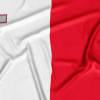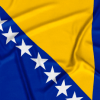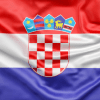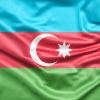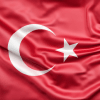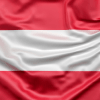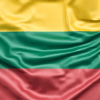ABOUT CROATIA

Croatia, located in Southeastern Europe, boasts a diverse landscape encompassing the Adriatic coast, lush forests, and picturesque islands. Known for its rich cultural heritage and ancient historical sites, Croatia offers a blend of Mediterranean and Central European influences.
Square – 56,594 square kilometers;
Capital – Zagreb;
National language – Croatian;
Currency – Croatian kuna (HRK).
With a strong emphasis on preserving its historical landmarks, and promoting sustainable tourism, Croatia continues to enchant visitors with its stunning landscapes and rich tapestry of history and culture.
Map

Croatia, officially known as the Republic of Croatia, is a unitary democratic parliamentary republic located at the crossroads of Central and Southeast Europe. With the capital in Zagreb, the country is organized into a well-defined administrative-territorial division that comprises multiple levels of governance, each playing a significant role in the country’s political, social, and economic development. The regions of Croatia, including Central Croatia, Slavonia, Dalmatia, Istria, and the Croatian Littoral, reflect the country’s diverse geographical features, climatic variations, and historical legacies that have shaped its regional development, economic activities, and cultural traditions. The regions serve as important hubs for tourism, agriculture, and industrial development, promoting regional cooperation, cultural exchanges, and the preservation of Croatia’s regional heritage.Â
Language
The official language of Croatia is Croatian, a South Slavic language that is spoken by the majority of the country’s population and serves as a vital element of Croatia’s cultural identity, literary heritage, and linguistic traditions. Croatian is part of the Serbo-Croatian language group, which also includes Serbian, Bosnian, and Montenegrin, reflecting the linguistic similarities and shared historical roots among the South Slavic nations in the Balkan Peninsula. The Croatian language has undergone linguistic reforms and standardization efforts that have contributed to its modern form and its recognition as an official language of Croatia.Â
CultureÂ
Croatia’s cultural heritage is characterized by its rich artistic traditions, folklore, music, and literature that reflect the country’s cultural diversity and historical legacy. Croatian culture celebrates various influences, including Slavic, Mediterranean, and Central European traditions, which are evident in the country’s festivals, culinary delights, and traditional customs that are cherished by the local communities. The arts play a significant role in Croatia’s cultural landscape, with numerous museums, galleries, and cultural institutions promoting the works of renowned Croatian artists, sculptors, and writers who have contributed to the country’s cultural renaissance and artistic legacy.
ClimateÂ
Croatia features a diverse climate, influenced by its geographical position and varied topography. The coastal regions of Croatia are popular for their warm, sunny weather, making them attractive destinations for beachgoers and tourists seeking a pleasant seaside holiday. Croatia’s inland regions, which include the plains and lowland areas, experience a continental climate with distinct seasonal variations. Croatia’s mountainous regions, which include the Dinaric Alps and the Pannonian Basin, experience an alpine climate characterized by cooler temperatures and higher levels of precipitation. The mountainous climate is characterized by refreshing cool breezes and lower humidity levels, creating an ideal environment for outdoor activities and nature exploration.Â
EconomyÂ
Croatia has a developing market economy that emphasizes tourism, manufacturing, agriculture, and service sectors as key contributors to its economic growth and stability. The country’s strategic location along the Adriatic Sea has positioned it as a popular tourist destination, attracting visitors to its stunning coastal resorts, historical sites, and natural attractions. Croatia’s manufacturing sector focuses on the production of machinery, textiles, and processed foods, contributing to the country’s export-oriented economy and industrial development. Croatia continues to pursue economic reforms, infrastructure development, and regional partnerships that promote sustainable growth, foreign investments, and the diversification of its economy, fostering a conducive business environment and entrepreneurial opportunities that benefit its citizens and contribute to the country’s economic prosperity.
PopulationÂ
Croatia had an estimated population of approximately 4 million people. Croatia’s population is diverse, comprising various ethnic groups, including Croats, Serbs, Bosniaks, and others, reflecting the country’s multicultural heritage and historical legacy within the Balkan region. The population is primarily concentrated in urban centers, including the capital city of Zagreb and other major cities and towns, which serve as economic hubs, cultural centers, and administrative regions that support the country’s socio-economic development and regional integration. With its rich cultural traditions, vibrant communities, and diverse demographics, Croatia’s population contributes to the country’s social fabric, cultural heritage, and national identity, fostering a sense of unity, diversity, and civic engagement within the context of a modern European nation.
Transportation
Croatia boasts a well-developed transportation system that comprises a network of roads, railways, air routes, and maritime services, facilitating efficient connectivity, regional integration, and the movement of goods and passengers across the country. The road infrastructure supports domestic and international travel, serving as vital corridors for trade, commerce, and tourism activities within Croatia’s various regions. The country’s motorways, including the A1 and A3, facilitate efficient transportation between major urban centers, promoting regional connectivity, and supporting the movement of goods and passengers across Croatia’s diverse landscapes and geographical features.






